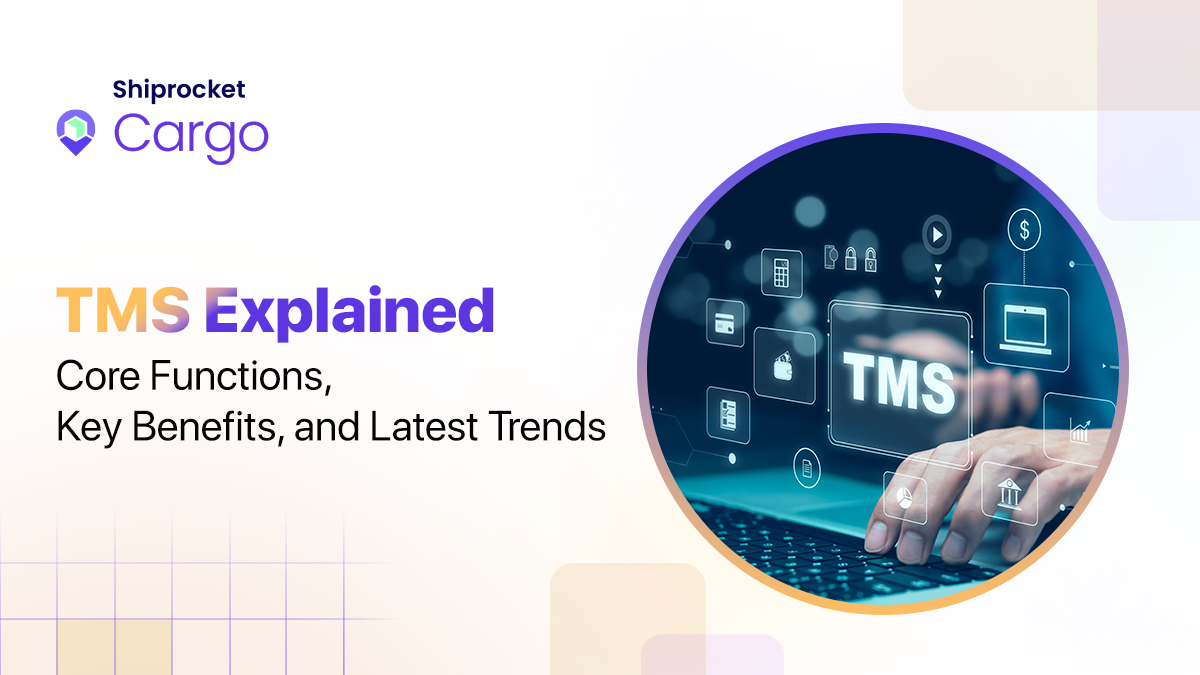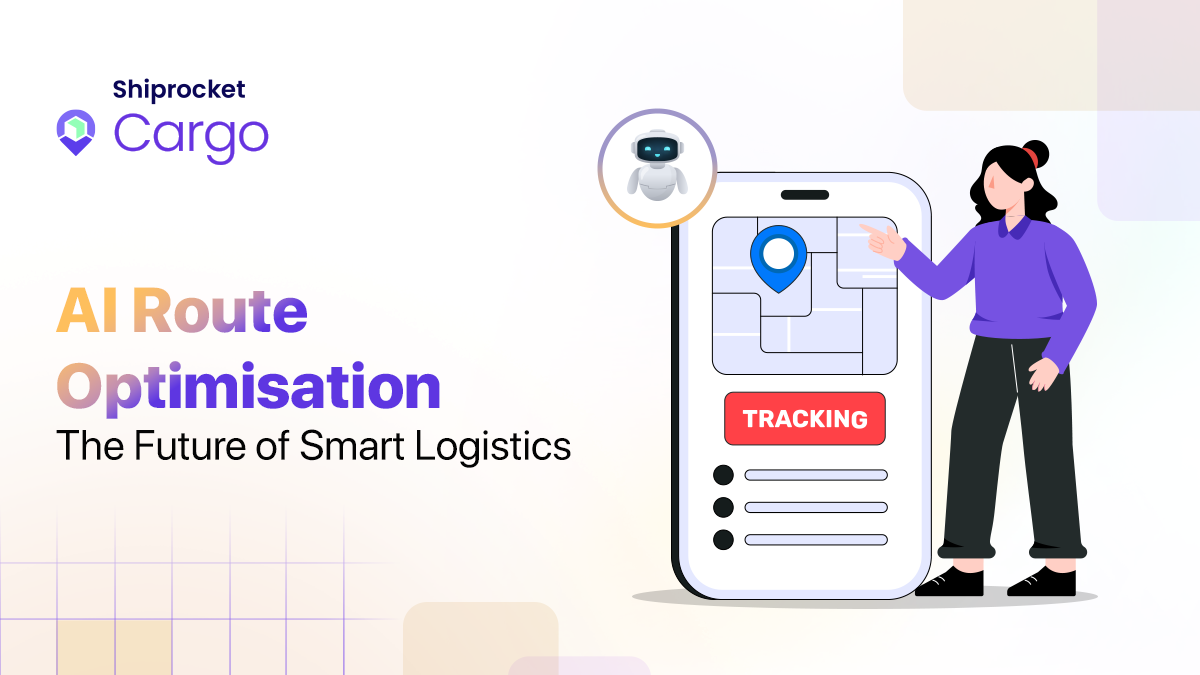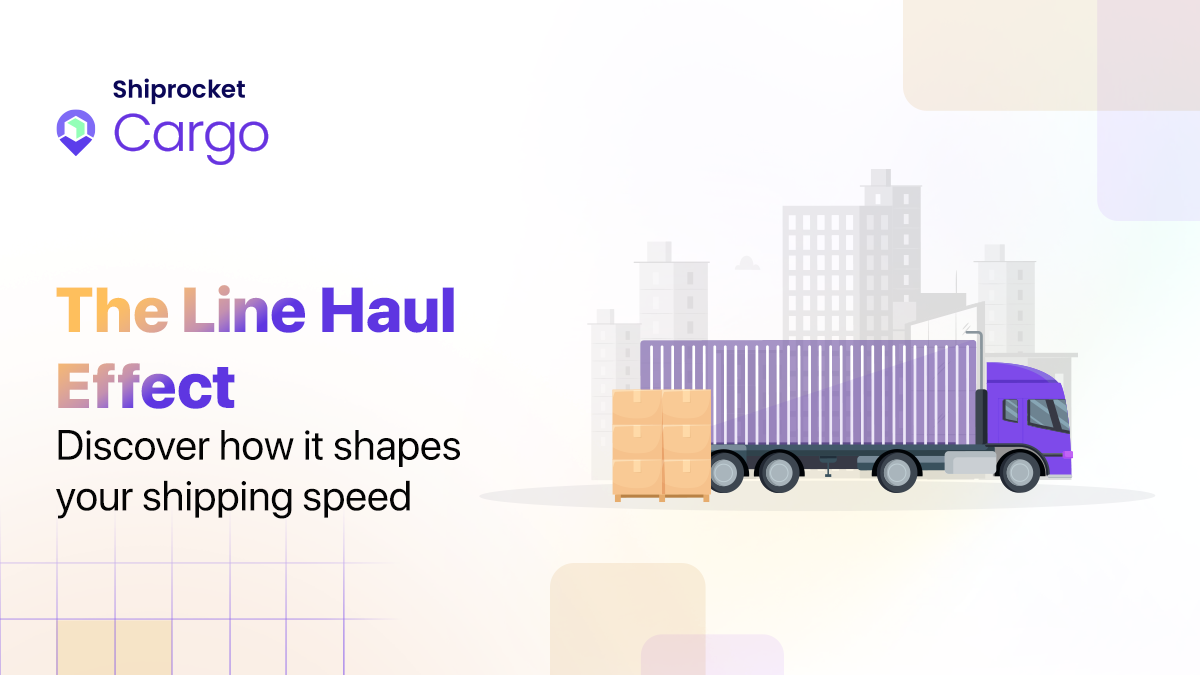Reverse Factoring Explained: A Game Changer in Supply Chain Finance
- What is Reverse Factoring?
- How Does Reverse Factoring Work?
- How is Reverse Factoring Different from Regular Factoring?
- What are the Benefits of Reverse Factoring?
- A Few Things to Watch Out For
- Is Reverse Factoring Right for Your Business?
- How Shiprocket Cargo Supports Smarter Supply Chain Financing
- Conclusion
Efficient cash flow management is important for businesses to maintain a resilient supply chain. Reverse factoring, often called supply chain finance, offers mutual benefits for buyers and suppliers. It enhances liquidity for suppliers while enabling buyers to extend their payment terms without straining supplier relationships. It allows suppliers to receive early invoice payments through a financial intermediary. It’s an effective financial tool for businesses that not only optimises working capital but also strengthens the overall efficiency of the supply chain.
This blog will explore the workings of reverse factoring, its importance, considerations before implementation, and more.
What is Reverse Factoring?
Reverse factoring is a financing method that helps buyers improve their working capital by extending payment terms without negatively affecting their suppliers. Simultaneously, it also ensures that suppliers receive early payments. The buyer initiates reverse factoring. This way, it’s completely different from traditional factoring, where suppliers initiate the process. Reverse factoring is particularly important for industries like retail, manufacturing, and agriculture, where maintaining a stable supply chain is essential.
How Does Reverse Factoring Work?
Here’s how reverse factoring works:
Agreement Initiation
The process starts when the buyer sets up a reverse factoring arrangement with a finance provider. This agreement outlines the terms and conditions under which the financier will provide early payments to the buyer’s suppliers. The buyer’s creditworthiness is assessed to determine eligibility and set the program’s parameters.
Invoice Approval
After supplying the goods or services, the supplier issues an invoice to the buyer for confirmation. The buyer reviews and approves the invoice, confirming its validity and agreeing to pay the specified amount on the due date. This approval is essential as it acts as a guarantee for the financier to proceed with early payment to the supplier.
Early Payment Offer
After the invoice is confirmed, a financial institution makes an offer to the supplier to receive early payment, enhancing cash flow on both sides. This type of payment is generally made at a discount, accounting for the cost of financing. The discount rate is generally based on the buyer’s credit risk, which is usually lower than that of the supplier. This results in favourable terms for the supplier.
Supplier Decision
The supplier evaluates the early payment offer and decides whether to accept it. If the supplier agrees to participate, the financier releases the payment after deducting the pre-agreed discount. This provides the supplier with immediate liquidity, improving their cash flow and reducing the need for alternative financing options.
Final Settlement
The buyer pays the full invoice amount to the financial institution on the invoice’s original due date. This payment settles the buyer’s obligation, completing the reverse factoring process. The buyer benefits from extended payment terms while the supplier gains early access to funds, creating a win-win situation for both parties.
How is Reverse Factoring Different from Regular Factoring?
Here are some ways reverse factoring is different from regular factoring:
Initiation of the Process
The supplier initiates regular factoring. They sell their accounts receivable to a financial institution (factor) to receive immediate cash. Reverse factoring, on the other hand, is initiated by the buyer. In reverse factoring, the buyer partners with a financial provider to ensure suppliers are paid quickly while the buyer settles the amount with the provider at a later date.
Control and Negotiation
Regular factoring gives suppliers control over which invoices to factor and negotiate terms directly with the factor. In reverse factoring, the buyer controls the terms and selects which invoices are eligible for early payment through the factor.
Cost Implications
In traditional factoring, the supplier is responsible for covering the associated costs. These costs may be higher due to the risk associated with the buyers’ credit profiles. The costs involved in reverse factoring are often lower and may be borne by the buyer, given their stronger credit standing.
Impact on Relationships
Traditional factoring doesn’t always impact your buyer relationships. However, aggressive collection practices by the factoring company can put a strain on relationships. Reverse factoring, on the other hand, can strengthen your relationship with buyers as they speed up payments and improve your cash flow.
Here’s what you should choose and when:
- Opt for regular factoring if you need immediate cash flow, are willing to manage the factoring process, and have numerous buyers with varying credit profiles.
- Consider reverse factoring if you work with large, creditworthy buyers willing to initiate the process. It’s also suitable for you if you’re looking for lower financing costs and improved cash flow without managing the factoring relationship.
What are the Benefits of Reverse Factoring?
Here’s how implementing reverse factoring can benefit your business:
Optimise Cash Flow and Working Capital
Reverse factoring can help you extend your payment terms with suppliers without negatively impacting their cash flow. It allows you to retain cash longer, improving liquidity and freeing up working capital for other investments. Suppliers receive early payments facilitated by a financial institution, ensuring their operations remain unaffected.
Strengthen Supplier Relationships
Reverse factoring means quicker payments for suppliers, which helps them manage their cash flow more effectively. It can lead to stronger and more collaborative partnerships, ensuring better terms and increased reliability.
Reduce Supply Chain Risk
Ensuring your suppliers have access to timely payments through reverse factoring minimises the risk of disruptions caused by financial strain. A financially stable supplier base contributes to a more resilient supply chain, which, in turn, safeguards your operations against potential delays or failures.
Lower Financing Costs for Suppliers
Suppliers often face higher financing costs due to their credit profiles. Reverse factoring uses buyer creditworthiness, allowing suppliers to access funds at more favourable rates. It reduces financing costs and enhances their profitability and operational efficiency.
Enhance Operational Efficiency
Reverse factoring can help you streamline the payment process, reducing administrative burdens for both you and your suppliers. Automated transactions and clear payment schedules improve accuracy and save time. This gives your team more time to focus on core business activities.
Support Supplier Growth
Access to early payments enables suppliers to invest in their growth, whether through expanding operations, hiring staff, or innovating products. Reverse factoring indirectly supports their development, contributing to a more efficient supply chain.
Improve Financial Metrics
Reverse factoring can positively impact your financial statements by optimising cash flow and reducing liabilities. Improved liquidity ratios and working capital metrics enhance your financial health and make your business more attractive to investors and stakeholders.
Enhance Financial Transparency and Control
Reverse factoring gives you clearer visibility into your financial operations and a more accurate view of your short-term obligations. You can make smarter financial decisions, forecast cash flow more confidently, and align payment cycles with your goals. It gives you great control so you can reduce uncertainty and enhance your overall financial governance.
A Few Things to Watch Out For
You should evaluate some aspects before adopting reverse factoring to ensure it aligns with your company’s financial strategy and operational capabilities.
- Evaluate Your Financial Strength
Reverse factoring leverages your creditworthiness to facilitate early payments to suppliers. If your credit profile isn’t strong, you might face higher financing costs or limited access to favourable terms. Ensure your finances are strong enough to use reverse factoring without putting unnecessary pressure on your budget.
- Understand the Cost Implications
While reverse factoring can improve supplier relationships and cash flow, it comes with costs. Financial institutions charge fees for their services, which can accumulate over time. Analyse whether the benefits outweigh these expenses and consider how they impact your overall financial strategy.
- Assess Supplier Readiness and Impact
Not all suppliers may be equipped or willing to participate in reverse factoring programs. Some may not have the required infrastructure or be cautious about potential consequences. Engage with your suppliers to determine their interest and readiness, ensuring that reverse factoring doesn’t strain these relationships.
- Consider Operational and System Integration
Implementing reverse factoring requires integrating new processes and systems. It can be complex and may necessitate changes in your existing workflows. Evaluate your organisation’s capacity to manage these changes without disrupting daily operations.
- Review Legal and Contractual Obligations
Ensure you thoroughly understand reverse factoring agreements, including legal contracts that define the roles and responsibilities of all parties, any clauses that may affect your flexibility or impose additional obligations, etc. You can consult with legal experts to understand these terms better.
- Monitor Potential Risks and Dependencies
Depending on reverse factoring can lead to reliance on financial institutions. Any changes in their policies or financial health could impact your operations. Diversify your financing strategies to mitigate such risks and maintain operational resilience.
- Ensure Accurate Financial Reporting
Work closely with your accounting team to ensure transparency and accuracy in reporting. Reverse factoring can affect how liabilities and cash flows are reported in your financial statements. Misrepresentation can lead to compliance issues and misinform stakeholders.
- Plan for Long-Term Sustainability
Consider how reverse factoring fits into your long-term financial strategy. While it can offer short-term benefits, over-reliance may mask underlying financial issues. Regularly review the program’s effectiveness and make adjustments as needed to support sustainable growth.
Is Reverse Factoring Right for Your Business?
You should consider reverse factoring if:
- You aim to support supplier liquidity and healthy cash flow and enhance supplier relationships.
- Your business has strong creditworthiness.
- You want to optimise your working capital.
Reverse factoring might not be suitable for your business if:
- Your suppliers prefer their own financing arrangements: Some suppliers may have existing financial strategies or relationships and might be reluctant to participate in a buyer-initiated program.
- Your company has limited financial stability: If your business faces financial challenges, reverse factoring could strain your resources further and may not be sustainable.
- The complexity of implementing reverse factoring is a concern: Establishing a reverse factoring program involves complicated contractual agreements and coordination with multiple parties, which can be resource-intensive.
- Supplier dependency is an issue: Relying heavily on reverse factoring can create dependencies on external financing, potentially reducing flexibility in managing supplier relationships and financial strategies.
How Shiprocket Cargo Supports Smarter Supply Chain Financing
Shiprocket Cargo simplifies heavy and bulk shipping through tech-enabled logistics that lead to smarter, faster, and more cost-effective supply chains. Our all-in-one platform ensures efficiency during shipping and financial flexibility to help you grow your business without hassle.
Our comprehensive B2B cargo solution handles all the heavy lifting, offering full truckload (FTL), partial truckload (PTL), and air cargo.
Here’s how we help you scale:
- Ship to 24,000+ pin codes across India.
- Choose from 14 trusted logistics partners.
- Select the best carrier using our smart algorithm and get full visibility from pickup to delivery.
- You can save up to 40% on logistics costs by shipping at affordable rates starting at just Rs. 6 per kg.
- Reach out to our customer support team anytime for instant assistance.
Our next-gen features, including quick commerce, time-bound deliveries, real-time notifications, weight dispute redressal, NDR support, ERP integrations, etc., help you stay ahead and efficient.
Shipping with us is quick and easy. You can get started in minutes by creating a shipment, choosing a courier, and shipping your parcel.
Conclusion
Reverse factoring is a popular form of supply chain finance that offers great benefits for all parties involved. Suppliers gain quicker access to funds, improving their cash flow, while buyers can manage their working capital more effectively. Reverse factoring strengthens partnerships and relationships and enhances financial stability across the supply chain. More than an alternative financing option to traditional factoring, reverse factoring has become a way for businesses to optimise supply chain finances.



